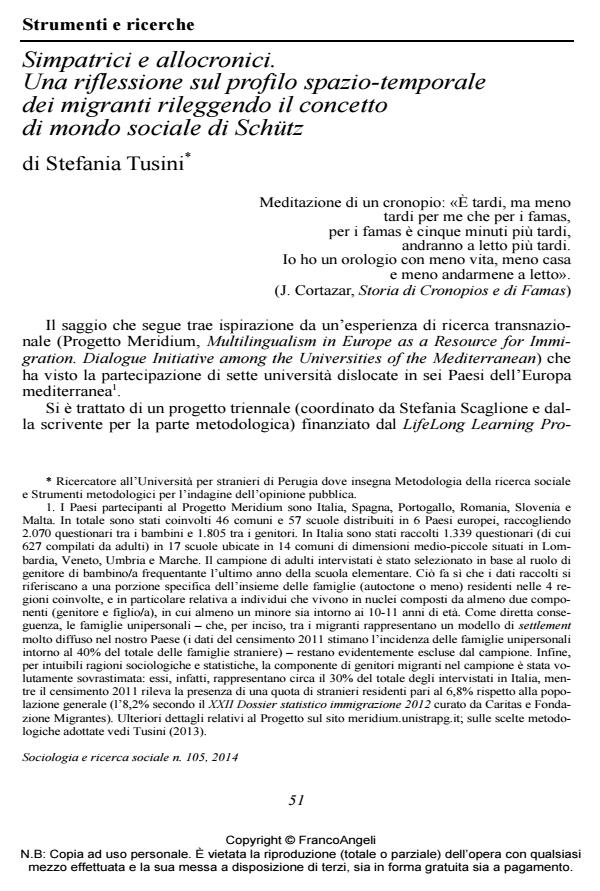Simpatrici e allocronici. Una riflessione sul profilo spazio-temporale dei migranti rileggendo il concetto di mondo sociale di Schütz
Titolo Rivista SOCIOLOGIA E RICERCA SOCIALE
Autori/Curatori Stefania Tusini
Anno di pubblicazione 2015 Fascicolo 2014/105
Lingua Italiano Numero pagine 35 P. 51-85 Dimensione file 178 KB
DOI 10.3280/SR2014-105002
Il DOI è il codice a barre della proprietà intellettuale: per saperne di più
clicca qui
Qui sotto puoi vedere in anteprima la prima pagina di questo articolo.
Se questo articolo ti interessa, lo puoi acquistare (e scaricare in formato pdf) seguendo le facili indicazioni per acquistare il download credit. Acquista Download Credits per scaricare questo Articolo in formato PDF

FrancoAngeli è membro della Publishers International Linking Association, Inc (PILA)associazione indipendente e non profit per facilitare (attraverso i servizi tecnologici implementati da CrossRef.org) l’accesso degli studiosi ai contenuti digitali nelle pubblicazioni professionali e scientifiche
This essay provides a reflection on the space-time profile of migrants in advancedsocieties. Employing the concepts of sympatry, allochronism and socialtime, the conclusion is that migrants and natives are sympatric and allochronicgroups; that is, while they are sharing the same space, they don’t share thesame time. The time lag is theoretically and empirically argued and supportedby statistical data in order to show the migrants’ non-coevalness condition. Inparticular, the concept of allochronism is carefully analysed and purified fromideological connotations to give a heuristically meaningful role. Finally, the resultsare used to examine the Schütz’s concept of social world and the typologyof relations that structured it (predecessors, successors, consociates, contemporaries).In the light of the above considerations, the latter seems inadequate toaccount for the space-time position of migrants and therefore requires a conceptualrevision
- A temporal perspective to empirically investigate the concept of social distance Stefania Tusini, in Quality & Quantity /2022 pp.4421
DOI: 10.1007/s11135-022-01319-7 - Reading religious radicalization by Merton’s strain theory Stefania Tusini, in Quaderni di Sociologia /2019 pp.47
DOI: 10.4000/qds.3498
Stefania Tusini, Simpatrici e allocronici. Una riflessione sul profilo spazio-temporale dei migranti rileggendo il concetto di mondo sociale di Schütz in "SOCIOLOGIA E RICERCA SOCIALE " 105/2014, pp 51-85, DOI: 10.3280/SR2014-105002